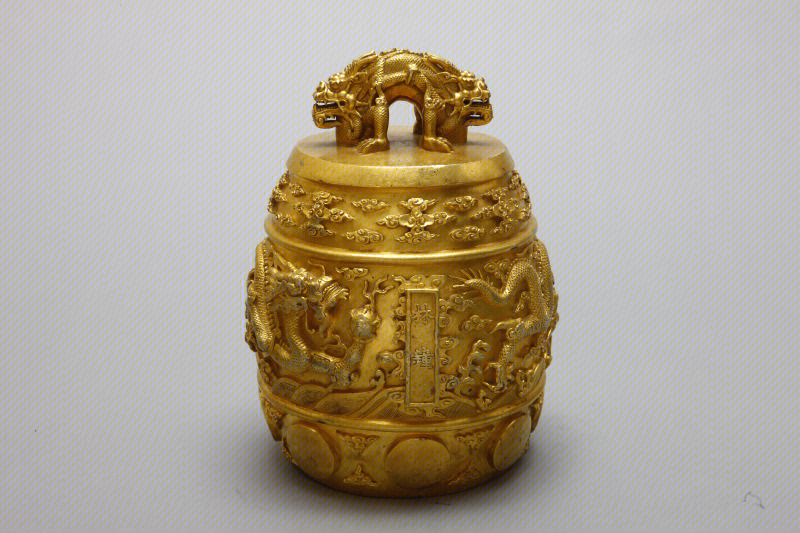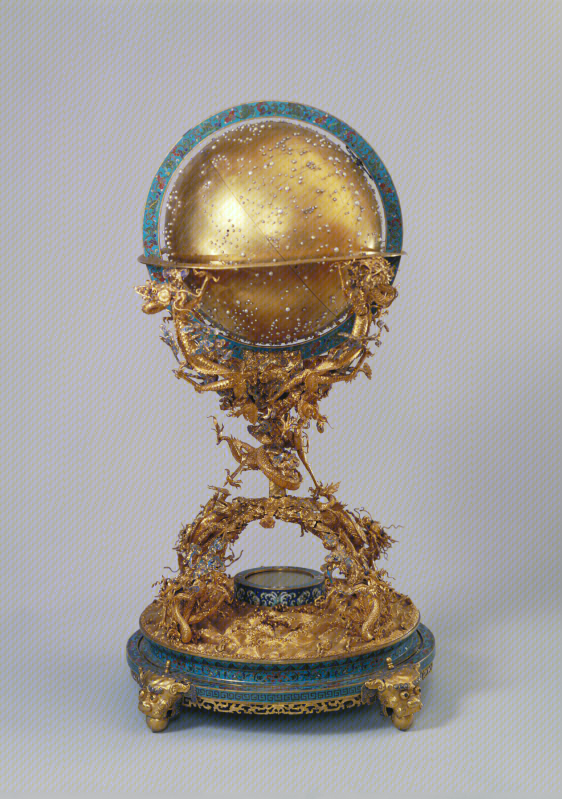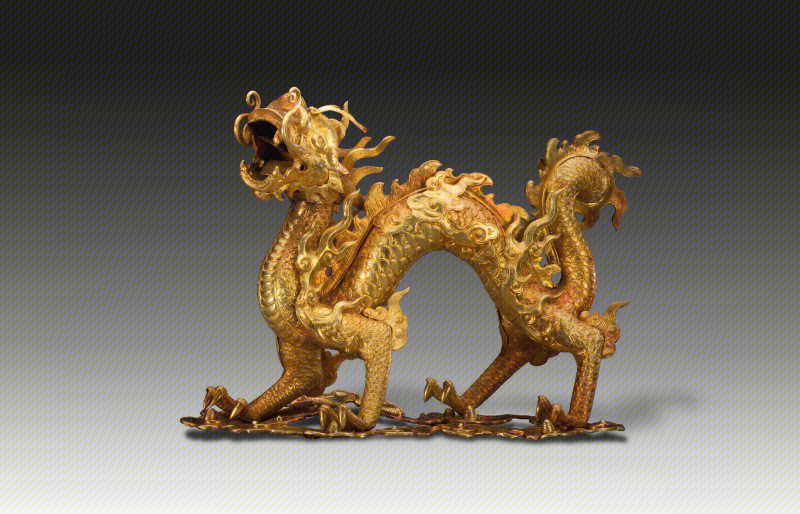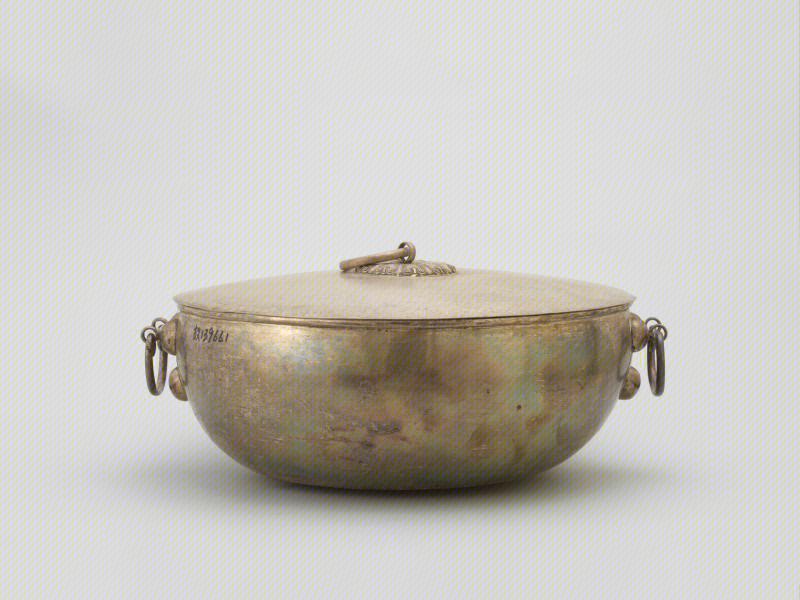
Golden Bell Chimes
Period: Qianlong reign (1736–1795), Qing dynasty (1644–1911)
Dimensions: frame height: 350 cm, width: 340 cm; bell height: 23.8 cm, diameter: 16.1 cm
These golden bell chimes (bianzhong) are cast with forty percent gold and have a gold-plated (dujin) surface—a composition which makes these genuine gold bells. (The ancients referred to bronze as gold and auspicious gold while calling actual gold yellow gold or genuine gold. Traditionally, bronze bells, too, have been called gold bells.) With a double-dragon knob, each bell is cast in a rounded elliptical shape with the inscription “Made in the fifty-fifth year of the Qianlong reign” on the obverse, its unique pitch (lü) name on the reverse, and an exquisite, three-dimensional dragon-among-clouds design. The eight protruding circles near the mouth are struck to sound the bell. Distinct from the variously sized sets of bell chimes (bianzhong) with handles (yong) or looped knobs (niu) of the pre-Qin period (before 221 BCE), the chime bells in this sixteen-piece set from the imperial palace of the Qing dynasty (1644–1911) are uniform in appearance and size yet distinguished in pitch by thickness, which is to say, the thinner the bell, the lower the tone. With four additional notes (written with bei) and the standard twelve-note gamut (written sans bei), the scale of the Qing period is given in the following sequence: bei yize, bei nanlü, bei wuyi, and bei yingzhong; huangzhong, dalü, taicu, jiazhong, guxian, zhonglü, ruibin, linzhong, yize, nanlü, wuyi, and yingzhong.
During performances, the sixteen bell chimes are hung on a frame and divided into two levels based on yin and yang tonal groupings with eight yang notes on the top and eight yin notes on the bottom—the entirety sequenced from low to high. The frame used to hang the bells is known in Chinese as sunju. The horizontal bars are called sun, the topmost of which is adorned with carved dragon heads on either end and crowned with a row of five golden luan (a mythical bird akin to the Chinese phoenix, fenghuang). The vertical posts are called ju, which are supported by a pair of polychrome lions in a crouching pose atop decorative plinths (called fuzuo). Splendidly designed with lavish ornamentation, the frame is covered in a layer of gold lacquer while the birds and dragons hold polychrome tassels in their mouths.
Belonging to the category of metal (jin) instruments of the traditional eight tones (bayin), bell chimes were important ritual instruments in court musical ensembles since the pre-Qin period and throughout China’s dynastic history. In the imperial courts of the Ming (1368–1644) and Qing dynasties, they were played exclusively for ritual sacrifices at temples and altars and during court ceremonies as part of official harmonious music arrangements (called zhonghe shaoyue), which signified the status of the gods of heaven and earth and supreme imperial authority.
This group of golden bell chimes was recast by special order of the Qianlong Emperor (r. 1736–1795) for ceremonies at the Palace of Heavenly Purity (Qianqing gong), which was originally furnished with bronze bell chimes. In the fifth lunar month of the fifty-fifth year (1790) of the Qianlong reign, an uncontrolled fire starting in the Pure Tea Section (Qingcha fang) and Outer Fruit Section (Wai guofang) within the West Prosperity Gate (Xihua men) of the Forbidden City damaged the original bronze bell chimes, so the emperor ordered a recasting of the bell chimes according to the design of the golden bell chimes of the Palace of Tranquil Longevity (Ningshou gong). Made at exorbitant cost, this set of golden bell chimes was cast with a composition of forty percent gold, at over 10,000 taels, while the surface was gold plated (dujin) five times and gilded with tens of taels of pure gold leaf.








